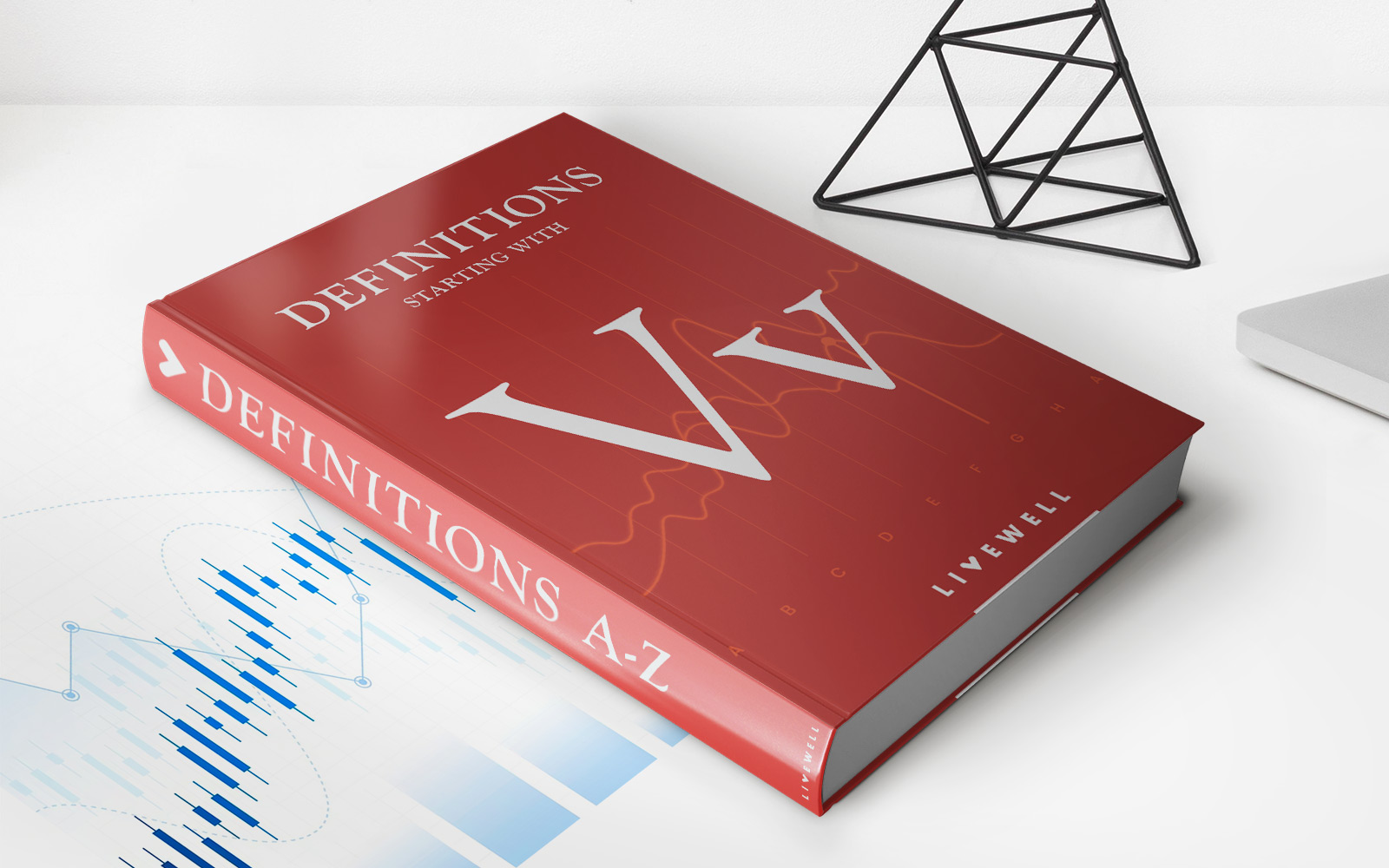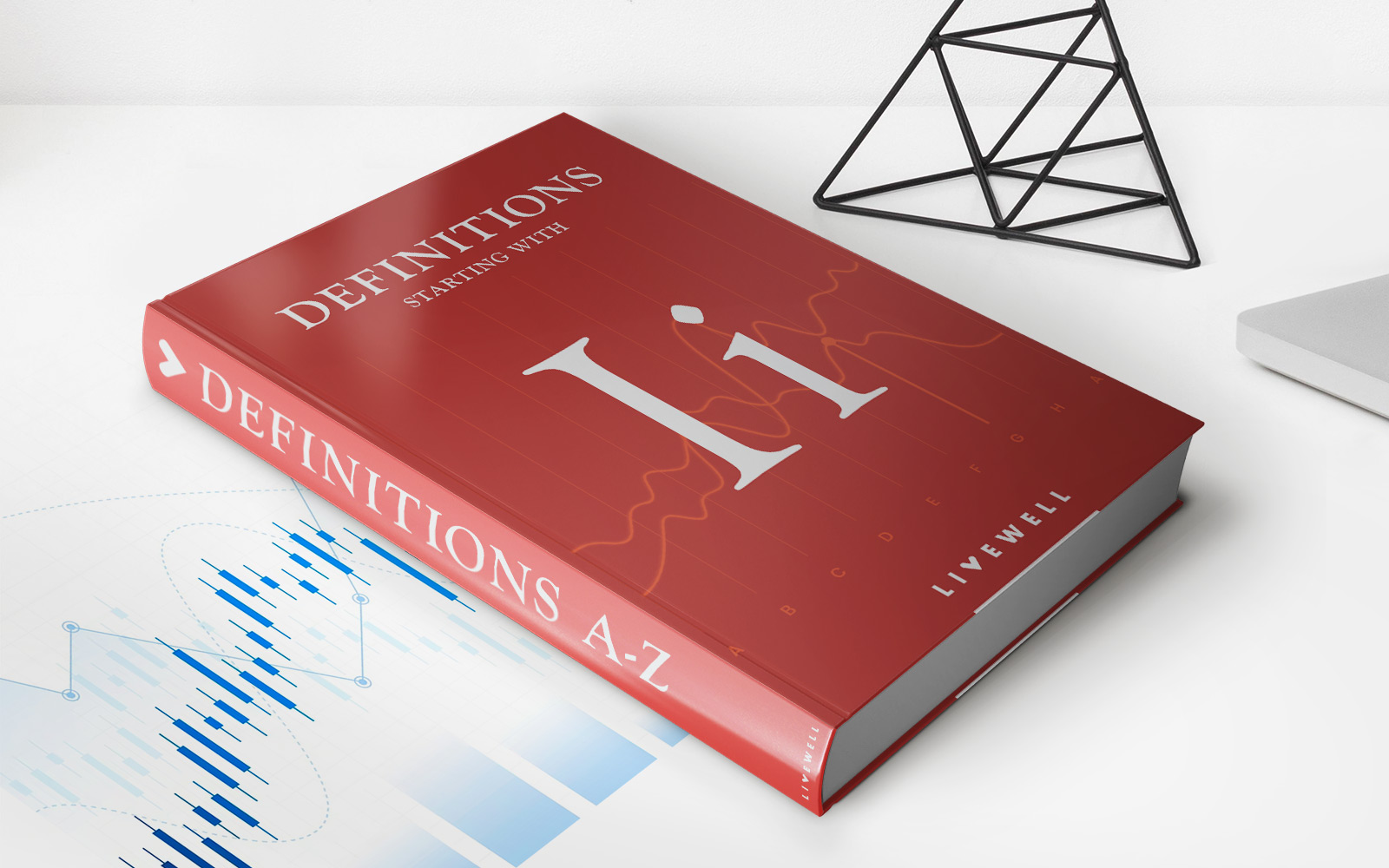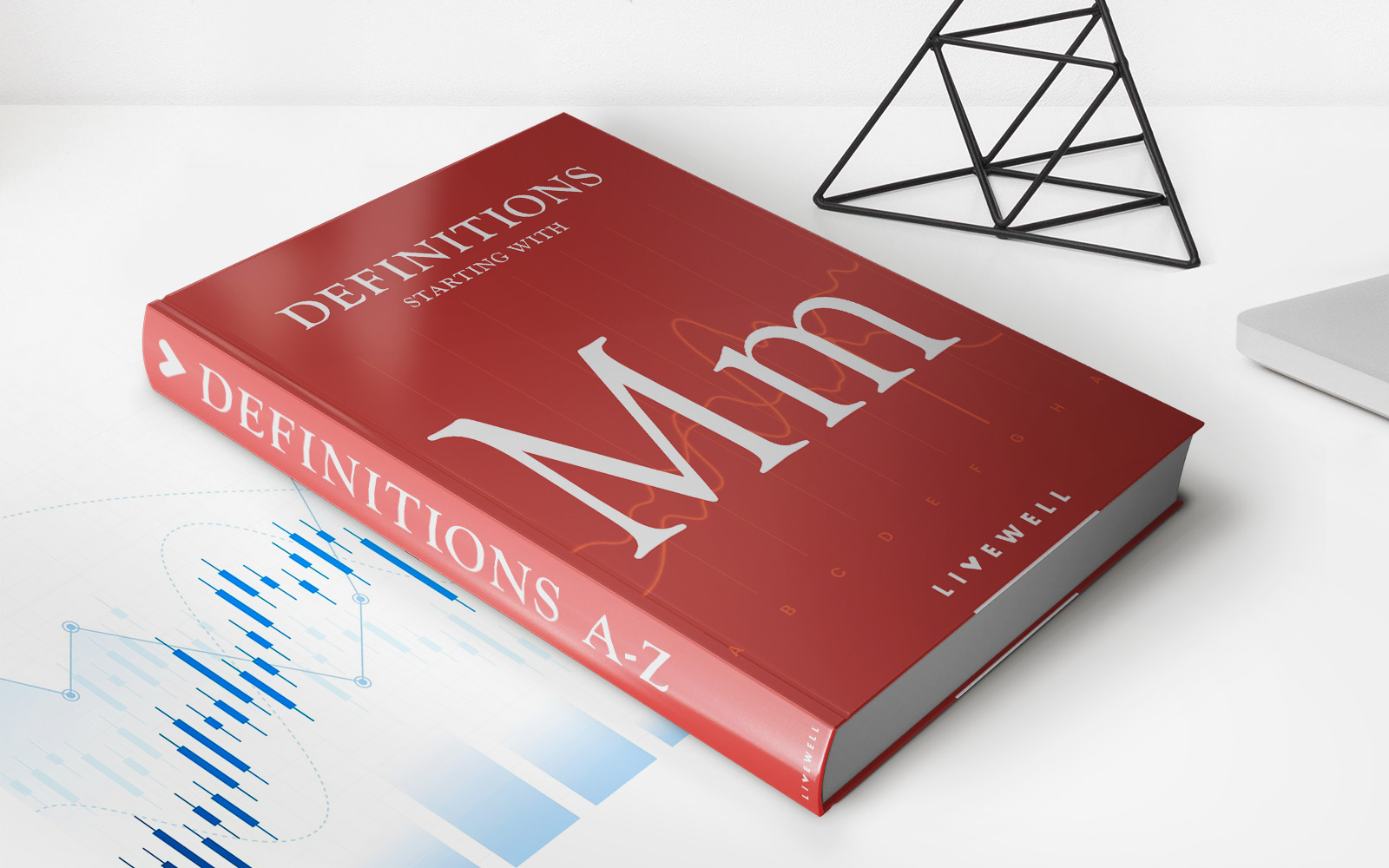Home>Finance>Who Bears The Investment Risk In Variable Life Insurance Products


Finance
Who Bears The Investment Risk In Variable Life Insurance Products
Modified: February 23, 2024
Discover who assumes the investment risk in variable life insurance products. Understand the finance behind these policies and make informed decisions.
(Many of the links in this article redirect to a specific reviewed product. Your purchase of these products through affiliate links helps to generate commission for LiveWell, at no extra cost. Learn more)
Table of Contents
Introduction
Variable life insurance products are a unique type of insurance that combines life insurance coverage with investment options. These products offer policyholders the opportunity to build cash value over time, while also providing a death benefit for their beneficiaries. Unlike traditional life insurance policies, variable life insurance allows policyholders to allocate their premiums towards a variety of investment options, such as mutual funds, stocks, and bonds.
This article aims to provide a comprehensive understanding of variable life insurance products and delve into the concept of investment risk associated with them. By exploring the components and intricacies of these products, we will determine who bears the investment risk – the policyholder or the insurance company.
Before diving into the specifics, it is important to note that variable life insurance products are subject to market fluctuations and come with a certain level of risk. Policyholders should carefully consider their investment goals, risk tolerance, and the financial stability of the insurance company before opting for this type of coverage.
Now, let’s explore the key components of variable life insurance products to gain a better understanding of how they work and the investment risks they entail.
Understanding Variable Life Insurance Products
Variable life insurance products are a type of permanent life insurance that offer both a death benefit and an investment component. Unlike traditional forms of life insurance, such as whole life or term life insurance, variable life insurance policies allow policyholders to allocate a portion of their premiums towards investment options.
One of the key features of variable life insurance is the ability to choose from a range of investment options. These options typically include mutual funds that invest in various asset classes like stocks, bonds, and money market instruments. Policyholders have the flexibility to change their investment allocations over time to align with their financial goals and risk tolerance.
The cash value component of variable life insurance policies is tied to the performance of the underlying investments. If the investments perform well, the policy’s cash value can grow. Conversely, if the investments perform poorly, the cash value may decrease.
Policyholders also have the option to make additional premium payments, which can further increase the cash value of the policy. This additional cash value can be used for various purposes, such as borrowing against the policy or supplementing retirement income.
It’s important to note that variable life insurance policies come with fees and expenses, including mortality charges, administrative fees, and investment management fees. These fees are deducted from the cash value of the policy and can impact the overall returns.
Overall, variable life insurance products offer a combination of life insurance protection and investment opportunities. They provide policyholders with the potential for growth of their cash value, but also expose them to investment risks.
Now that we have a basic understanding of how variable life insurance products work, let’s explore the different components that make up these policies and the investment risks associated with them.
Components of Variable Life Insurance Products
Variable life insurance products consist of several key components that work together to provide policyholders with both life insurance coverage and investment opportunities. Understanding these components is crucial to comprehending the investment risks involved in variable life insurance.
1. Death Benefit: The death benefit is the amount of money that is paid out to the beneficiaries upon the death of the insured individual. It serves as the primary purpose of life insurance, providing financial protection for loved ones in the event of the insured’s death.
2. Premiums: Policyholders make regular premium payments to the insurance company. These payments are used to cover the cost of insurance coverage and fund the cash value component of the policy. Premiums can be flexible or fixed, depending on the policy design.
3. Cash Value: The cash value is the accumulated investment portion of the policy. It grows over time based on the performance of the underlying investments chosen by the policyholder. The cash value can be accessed by the policyholder through withdrawals or loans, although this may reduce the death benefit.
4. Investment Options: Variable life insurance policies offer different investment options, typically consisting of a variety of mutual funds. Policyholders can allocate their premiums among these investment options based on their risk tolerance and investment objectives. The investment options are subject to market fluctuations and can impact the growth or decline of the cash value.
5. Fees and Expenses: Variable life insurance policies incur fees and expenses that are deducted from the cash value. These may include mortality charges, administrative fees, and investment management fees. It’s important for policyholders to understand these costs and how they can affect the overall returns of the policy.
6. Policy Riders: Policyholders can enhance their variable life insurance policies with optional policy riders. These riders provide additional benefits or customization to the policy, such as accelerated death benefit riders or waiver of premium riders. Adding riders often incurs additional costs.
By understanding these essential components, policyholders can make informed decisions about their variable life insurance policies and evaluate the investment risks associated with them. Now, let’s delve into the specific investment risks that policyholders need to be aware of.
Investment Risks in Variable Life Insurance Products
Variable life insurance products offer policyholders the opportunity to grow their cash value through investment options. However, with the potential for growth comes inherent investment risks. It is crucial for policyholders to understand these risks before committing to a variable life insurance policy.
1. Market Risk: Variable life insurance is directly tied to the performance of the underlying investments. As such, policyholders are exposed to market risk. Market fluctuations and economic conditions can impact the value of the investments, potentially leading to a decrease in the cash value of the policy.
2. Investment Performance: The performance of the chosen investment options is a critical factor in the growth of the cash value. Policyholders should carefully evaluate the historical performance and risk profiles of the available investment options before making their allocations.
3. Interest Rate Risk: Variable life insurance products may have fixed or floating interest rates on loans or withdrawals. Changes in interest rates can affect the cost of borrowing against the policy or the growth of the cash value. Policyholders should be aware of the impact of interest rate changes on their policy’s cash value.
4. Policyholder’s Investment Decisions: The investment success of a variable life insurance policy relies on the policyholder’s ability to make informed investment decisions. Lack of proper research, poor timing, or excessive risk-taking can negatively impact the growth and overall performance of the policy.
5. Liquidity Risk: Variable life insurance policies have restrictions on accessing the cash value, especially in the early years. Policyholders should consider their liquidity needs and the potential consequences of early withdrawals or loans, as they can reduce the death benefit and affect the long-term sustainability of the policy.
6. Fees and Expenses: Variable life insurance policies come with fees and expenses that impact the cash value. Policyholders should understand and consider these costs, such as mortality charges, administrative fees, and investment management fees, as they can reduce the overall returns of the policy.
It’s important to note that variable life insurance products are designed for individuals with a higher risk tolerance and a longer investment horizon. Policyholders should carefully assess their financial goals, risk tolerance, and investment knowledge before opting for this type of coverage.
Now that we have explored the investment risks associated with variable life insurance products, let’s determine who bears the primary responsibility for these risks – the policyholder or the insurance company.
Who Bears the Investment Risk?
In variable life insurance products, the investment risk is primarily borne by the policyholder rather than the insurance company. This is due to the nature of these policies, where policyholders have control over the allocation of their premiums and the choice of investment options.
Policyholders are responsible for making investment decisions and selecting the investment options that align with their financial goals and risk tolerance. The performance of these investments directly impacts the growth or decline of the policy’s cash value. If the investments perform well, the cash value can increase, providing potential growth and financial security. However, if the investments underperform, the cash value may decrease, potentially affecting the policy’s overall value.
While the insurance company does not bear the direct investment risk, it does play a role in managing and administering the investments within the policy. Insurance companies often offer a selection of investment options and provide guidance to policyholders in the form of educational materials or access to financial professionals. However, the ultimate decision-making power lies with the policyholder.
The insurance company does, however, bear some level of risk. It guarantees the death benefit, meaning that regardless of the performance of the investments, the insurance company will pay out the predetermined death benefit to the beneficiaries upon the insured’s death. To mitigate this risk, insurance companies carefully manage their investment portfolios and set premiums and fees to ensure the long-term viability of the policy.
It’s important for policyholders to understand that variable life insurance products are not risk-free. They come with inherent investment risks, and the responsibility lies with the policyholder to monitor and manage these risks. Policyholders should regularly review the performance of their investments, adjust their allocations, and stay informed about market trends to make informed decisions.
It’s worth noting that the investment risk in variable life insurance products is one of the factors that differentiates them from traditional forms of life insurance. Traditional life insurance policies provide a guaranteed cash value and a fixed death benefit, with the investment risk borne solely by the insurance company.
In summary, while the insurance company handles the administrative aspects and guarantees the death benefit, the investment risk in variable life insurance products primarily rests with the policyholder. Policyholders have control over investment decisions and must actively manage and monitor their policy’s investments to mitigate risk and optimize potential returns.
Now that we understand the roles and responsibilities regarding investment risk in variable life insurance products, let’s delve into the specific roles of policyholders and insurance companies in managing this risk.
Policyholder’s Role in Investment Risk
As discussed earlier, policyholders in variable life insurance products have a crucial role in managing the investment risk associated with their policies. They have the responsibility to make informed investment decisions and actively monitor the performance of their chosen investment options. Here are some key aspects of the policyholder’s role in managing investment risk:
1. Investment Allocation: The policyholder has the flexibility to allocate their premiums among different investment options offered by the insurance company. This decision is based on their risk tolerance, investment objectives, and market conditions. By diversifying their investments and considering different asset classes, policyholders can potentially mitigate risk and optimize their returns.
2. Regular Review and Adjustment: It is essential for policyholders to regularly review the performance of their investment options and make adjustments if necessary. This involves staying informed about market trends, assessing the historical performance of the investments, and evaluating any changes in personal financial goals. By keeping a proactive approach and making informed decisions, policyholders can respond to changing market conditions and potential risks.
3. Risk Tolerance Assessment: Policyholders need to assess their risk tolerance accurately. Risk tolerance refers to an individual’s ability and willingness to withstand potential investment losses. By understanding their risk tolerance, policyholders can align their investment allocations accordingly, ensuring that they are comfortable with the level of risk associated with their policy.
4. Monitoring Investment Performance: Policyholders have the responsibility to regularly monitor the performance of their chosen investments. This includes tracking the returns and comparing them to the associated risks. Regular assessments enable policyholders to identify any underperforming investments and, if necessary, reallocate their funds to more promising options.
5. Staying Informed: To effectively manage investment risk, policyholders should educate themselves about investment principles, financial markets, and the specific options available within their variable life insurance policy. This can involve reading educational materials provided by the insurance company, seeking guidance from financial professionals, or conducting independent research.
By actively engaging in these responsibilities, policyholders can have greater control over the investment risk in their variable life insurance policy. However, it is important to note that investment risk can never be entirely eliminated, and policyholders should always be prepared for the inherent volatility present in the financial markets.
Now that we’ve discussed the policyholder’s role in managing investment risk, let’s explore the insurance company’s role in this regard.
Insurance Company’s Role in Investment Risk
While policyholders bear the primary responsibility for managing the investment risk in variable life insurance products, insurance companies also play a significant role in mitigating and assisting in this risk. Here are the key aspects of the insurance company’s role in managing investment risk:
1. Investment Options: Insurance companies offer a range of investment options from which policyholders can choose. These options typically include various mutual funds or portfolios with different risk profiles and asset allocations. Insurance companies carefully select and monitor these investment options to ensure they meet regulatory requirements and align with the policyholder’s investment needs.
2. Research and Due Diligence: Insurance companies conduct extensive research and due diligence to evaluate potential investment options and select those that meet their criteria for risk and return. This includes analyzing the historical performance, assessing the investment managers’ expertise, and considering the overall fit within the insurance company’s investment portfolio.
3. Portfolio Management: Insurance companies actively manage the investment portfolios associated with their variable life insurance products. They regularly assess the performance of the investment options, make adjustments as needed, and ensure compliance with regulatory requirements. This ongoing portfolio management helps to mitigate risks and optimize returns within the given investment options.
4. Risk Management: Insurance companies have risk management strategies in place to ensure the long-term sustainability of variable life insurance products. They closely monitor market trends, evaluate the overall risk exposure of their investment portfolios, and take steps to mitigate potential risks. This includes diversification, asset allocation, and risk hedging strategies that aim to minimize volatility and optimize returns.
5. Regulatory Compliance: Insurance companies must adhere to regulatory guidelines when offering variable life insurance products. These guidelines often prescribe investment limits, portfolio diversification requirements, and reporting standards to protect policyholders’ interests. By complying with these regulations, insurance companies help to provide a framework of protection and stability for policyholders.
6. Support and Education: Insurance companies play a role in supporting and educating policyholders about the investment options available in their variable life insurance policies. They provide educational materials, access to financial professionals, and online resources to help policyholders make informed investment decisions. By offering assistance and guidance, insurance companies aim to facilitate better risk management by policyholders.
It is important for policyholders to have confidence in the insurance company’s financial stability and consider their track record of managing investments. Assessing the reputation, financial strength, and expertise of the insurance company can provide policyholders with additional peace of mind when it comes to managing investment risk.
By fulfilling their responsibilities and actively collaborating with policyholders, insurance companies strive to create a partnership that helps manage investment risk in variable life insurance products. However, it is crucial for policyholders to remember that investment risks still exist, and they should actively participate in monitoring and managing those risks.
Now let’s conclude our discussion on investment risk in variable life insurance products.
Conclusion
Variable life insurance products blend the benefits of life insurance coverage with investment options, allowing policyholders to potentially grow their cash value over time. However, these products come with inherent investment risks that policyholders must understand and manage effectively.
In this article, we explored the components of variable life insurance products and discussed the investment risks they entail. Market risk, investment performance, interest rate risk, and policyholder decision-making are among the key risks associated with these products. While the insurance company has a role in managing investment risk, the primary responsibility lies with the policyholder.
Policyholders play an integral role in managing investment risk by carefully allocating their premiums, regularly reviewing and adjusting their investments, assessing their risk tolerance, and staying informed about market trends. Insurance companies support policyholders by offering a range of investment options, conducting research and due diligence, managing investment portfolios, and providing education and guidance.
However, it’s important for policyholders to be aware of the investment risks and actively participate in managing them. By being proactive and making informed investment decisions, policyholders can optimize their returns and mitigate potential risks.
When considering variable life insurance, policyholders should carefully evaluate their financial goals, risk tolerance, and the stability of the insurance company. Working with competent financial professionals and conducting thorough research can help policyholders make informed decisions that align with their financial objectives.
Overall, variable life insurance products can provide flexibility and growth potential for policyholders, but they require active management and awareness of the investment risks involved. By understanding these risks and their respective roles, policyholders and insurance companies can work together to create a partnership that maximizes the benefits and minimizes the potential downsides of variable life insurance.
Remember, investment risk is an inherent part of variable life insurance products, and it is essential to weigh the potential returns against the associated risks before making decisions. By being well-informed and proactive, policyholders can navigate the complexities of variable life insurance and make the most of their investment opportunities.














